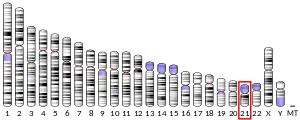| SAMSN1 | |||||||||||||||||||||||||||||||||||||||||||||||||||
|---|---|---|---|---|---|---|---|---|---|---|---|---|---|---|---|---|---|---|---|---|---|---|---|---|---|---|---|---|---|---|---|---|---|---|---|---|---|---|---|---|---|---|---|---|---|---|---|---|---|---|---|
| |||||||||||||||||||||||||||||||||||||||||||||||||||
| Identifiers | |||||||||||||||||||||||||||||||||||||||||||||||||||
| Aliases | SAMSN1, HACS1, NASH1, SASH2, SH3D6B, SLy2, SAM domain, SH3 domain and nuclear localization signals 1 | ||||||||||||||||||||||||||||||||||||||||||||||||||
| External IDs | OMIM: 607978 MGI: 1914992 HomoloGene: 11148 GeneCards: SAMSN1 | ||||||||||||||||||||||||||||||||||||||||||||||||||
| |||||||||||||||||||||||||||||||||||||||||||||||||||
| |||||||||||||||||||||||||||||||||||||||||||||||||||
| |||||||||||||||||||||||||||||||||||||||||||||||||||
| |||||||||||||||||||||||||||||||||||||||||||||||||||
| |||||||||||||||||||||||||||||||||||||||||||||||||||
| Wikidata | |||||||||||||||||||||||||||||||||||||||||||||||||||
| |||||||||||||||||||||||||||||||||||||||||||||||||||
SAM domain-containing protein SAMSN-1 is a protein that in humans is encoded by the SAMSN1 gene. [5]
Function
SAMSN1 is a member of a novel gene family of putative adaptors and scaffold proteins containing SH3 and SAM (sterile alpha motif) domains (Claudio et al., 2001 [PubMed 11536050]).
See also
References
- 1 2 3 GRCh38: Ensembl release 89: ENSG00000155307 - Ensembl, May 2017
- 1 2 3 GRCm38: Ensembl release 89: ENSMUSG00000022876 - Ensembl, May 2017
- ↑ "Human PubMed Reference:". National Center for Biotechnology Information, U.S. National Library of Medicine.
- ↑ "Mouse PubMed Reference:". National Center for Biotechnology Information, U.S. National Library of Medicine.
- ↑ "Entrez Gene: SAM domain, SH3 domain and nuclear localization signals 1". Retrieved 2017-09-28.
Further reading
- Zhu YX, Benn S, Li ZH, Wei E, Masih-Khan E, Trieu Y, Bali M, McGlade CJ, Claudio JO, Stewart AK (2004). "The SH3-SAM adaptor HACS1 is up-regulated in B cell activation signaling cascades". J. Exp. Med. 200 (6): 737–47. doi:10.1084/jem.20031816. PMC 2211965. PMID 15381729.
- Yamada H, Yanagisawa K, Tokumaru S, Taguchi A, Nimura Y, Osada H, Nagino M, Takahashi T (2008). "Detailed characterization of a homozygously deleted region corresponding to a candidate tumor suppressor locus at 21q11-21 in human lung cancer". Genes Chromosomes Cancer. 47 (9): 810–8. doi:10.1002/gcc.20582. PMID 18523997. S2CID 39369334.
- Rose JE, Behm FM, Drgon T, Johnson C, Uhl GR (2010). "Personalized smoking cessation: interactions between nicotine dose, dependence and quit-success genotype score". Mol. Med. 16 (7–8): 247–53. doi:10.2119/molmed.2009.00159. PMC 2896464. PMID 20379614.
- Brandt S, Ellwanger K, Beuter-Gunia C, Schuster M, Hausser A, Schmitz I, Beer-Hammer S (2010). "SLy2 targets the nuclear SAP30/HDAC1 complex". Int. J. Biochem. Cell Biol. 42 (9): 1472–81. doi:10.1016/j.biocel.2010.05.004. PMID 20478393.
- von Holleben M, Gohla A, Janssen KP, Iritani BM, Beer-Hammer S (2011). "Immunoinhibitory adapter protein Src homology domain 3 lymphocyte protein 2 (SLy2) regulates actin dynamics and B cell spreading". J. Biol. Chem. 286 (15): 13489–501. doi:10.1074/jbc.M110.155184. PMC 3075695. PMID 21296879.
- Yan Y, Zhang L, Xu T, Zhou J, Qin R, Chen C, Zou Y, Fu D, Hu G, Chen J, Lu Y (2013). "SAMSN1 is highly expressed and associated with a poor survival in glioblastoma multiforme". PLOS ONE. 8 (11): e81905. Bibcode:2013PLoSO...881905Y. doi:10.1371/journal.pone.0081905. PMC 3838348. PMID 24278465.
- Noll JE, Hewett DR, Williams SA, Vandyke K, Kok C, To LB, Zannettino AC (2014). "SAMSN1 is a tumor suppressor gene in multiple myeloma". Neoplasia. 16 (7): 572–85. doi:10.1016/j.neo.2014.07.002. PMC 4198825. PMID 25117979.
This article incorporates text from the United States National Library of Medicine, which is in the public domain.
This article is issued from Wikipedia. The text is licensed under Creative Commons - Attribution - Sharealike. Additional terms may apply for the media files.



